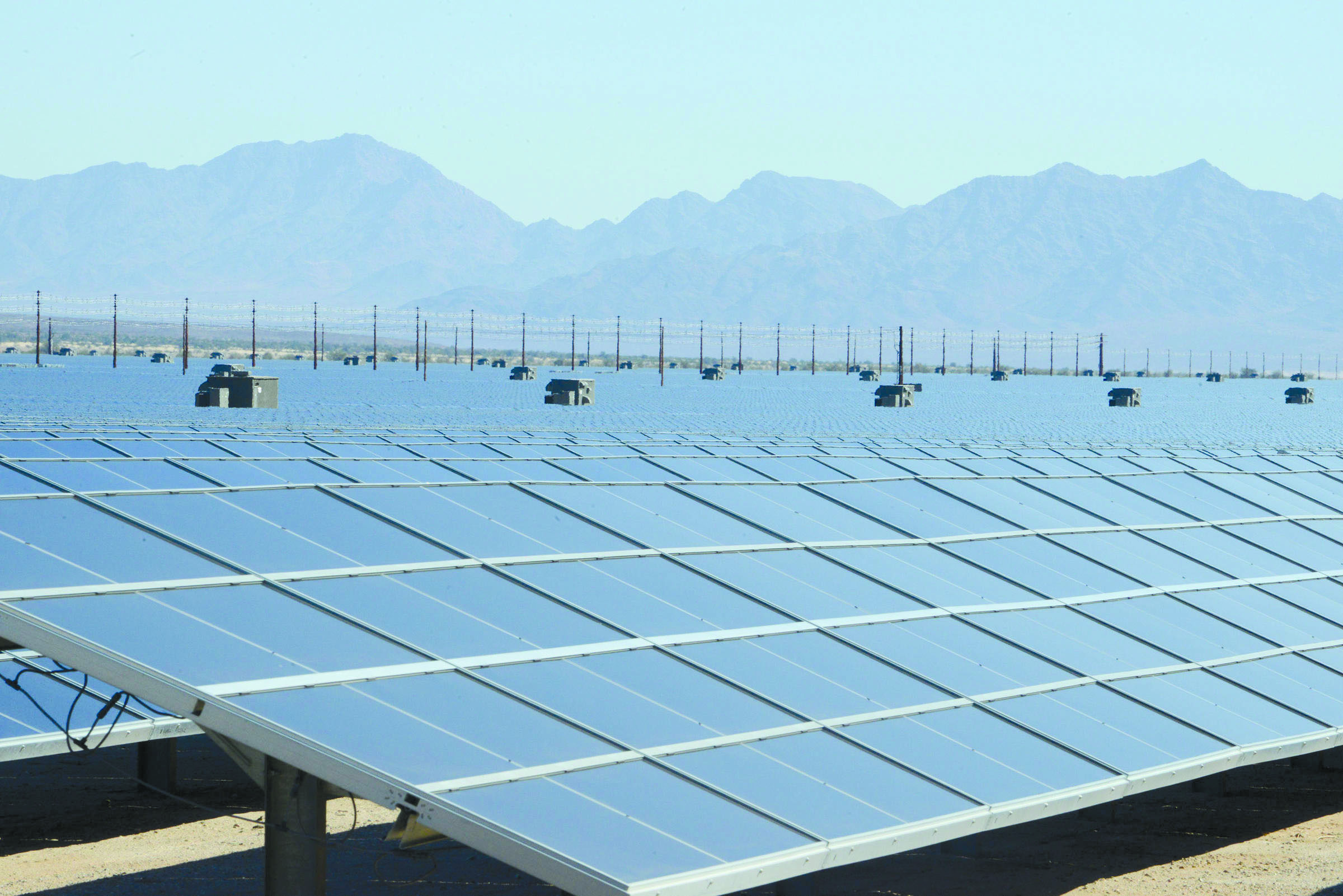
By Christine Peterson, WyoFile.com
Stretching across a piece of prairie in southwest Wyoming is the state’s first industrial solar field. It’s a small piece of the nation and world’s transition away from fossil fuels to renewable resources. It’s one part of the solution to a warming world that’s wreaking havoc with historic floods, droughts, tornadoes and wildfires.
It’s also interrupting critical big game movements and eating up habitat, according to a new paper co-authored by long-time Wyoming big game researcher Hall Sawyer.
“We need renewable energy, but we need to do it in a smart way,” Sawyer said. “Utility-scale solar highlights that better than anything. For big game, this is really an emerging issue because unlike the smaller-bodied mammals that can move through these perimeter fences, these larger-bodied mammals are completely blocked and can’t move through it.”
The paper, titled “Trade-offs between utility-scale solar development and ungulates on western rangelands” is the first in the country to examine and quantify the impact of solar fields on big game. It isn’t anti-solar, Sawyer is quick to say, but it does ask land managers and solar companies to think about siting and design. In the wrong place, he said, a solar field the size of some being built in states like Nevada and Arizona could add pressure to already-struggling herds of pronghorn, deer and even elk.
And solar is coming quickly. The renewable source is projected to grow from 3% of the U.S. supply to 40% by 2035, according to a U.S. Department of Energy factsheet, and to 45% by 2050. The transition will cost about $210 billion, but estimates say it will save the country about $1.7 trillion in climate damages and improved air quality.
Sawyer and his co-authors offer some solutions to that loss of habitat, including altering the fencing that encompasses each project, breaking the project up into smaller pieces, siting solar in already-disturbed areas and avoiding important migration routes.
“The goal should be to not make the same mistakes that we’ve made with siting oil and gas development,” said Jon Holst, wildlife and senior energy advisor for the Theodore Roosevelt Conservation Partnership. “The goal should be to be thoughtful about how we put these on the landscape.”
As far as industrial solar fields go, Wyoming’s is pretty small at about 640 acres. It’s also not in the worst location. Sawyer lists three criteria that developers generally use when considering building a solar farm: Proximity to existing roads, proximity to existing power infrastructure and developing in an already disturbed area.
This field met the first two — it’s right on Highway 372 and near existing transmission — but the relatively small slice it bit out of the prairie was undeveloped land. It also turned out to be critical pronghorn habitat.
Big-game collaring data showed that 86% of migrating pronghorn moved through the area prior to the solar farm being built. About 70% of the resident pronghorn used the area.
“As you drive through there, it’s not a pristine landscape,” Sawyer says. “This is adding to existing oil and gas development, large trona
The issue is less with the solar panels themselves and more with the 6-foot-high chain-link fence surrounding the development. The National Electric Code requires security fencing around solar facilities just like it’s required around refineries or power plants. But in the sagebrush rangelands, it means more big-game habitat lost.
Angi Bruce, Wyoming Game and Fish Department’s deputy director, wasn’t surprised by the study’s results. Game and Fish had requested the Bureau of Land Management contract with researchers to study the impact because they feared it could turn out this way, she said.
“It’s all about location, and when we’re putting it out in native sagebrush habitat there’s a high risk of impacting wildlife because you’re destroying that habitat,” she said. “The big game movements are a huge concern.”
While this issue may feel new to Wyoming, it’s not new across the country.
Battles are raging from Massachusetts to California about proper siting of solar facilities, according to the Pew Charitable Trusts. As state and federal leaders try to address climate change by reducing the nation’s reliance on fossil fuels, local leaders and land advocates are asking for regulators to take a step back and be more thoughtful about where to place development.
“With any energy development, we can find a way to work with it if proponents are willing,” Bruce said.
Carbon-reducing solar panels can be developed while minimizing the impact on big game, Sawyer and the other authors stress.
Developers are already working on solutions to the southwest Wyoming field to try and prevent antelope from becoming stuck between the perimeter fence and the highway like they did during a bad storm in 2019. Game and Fish is working with the current owner, Clenera, to modify the fencing and open an alleyway so animals can move between the fence and highway instead of inside the right of way, according to the agency. An email to the original owner, 174 Power Global, was not returned by press time.
With some advance planning, solar companies can potentially separate portions of the fields to create some permeability in the facility. They could also possibly site the projects in slightly different places to avoid major migration routes or winter range, Sawyer said.
Building in already-developed areas is also important. A solar project planned north of Casper is in an area with current industrial uses, Bruce said. Game and Fish gave few comments during the project’s approval process because little wildlife use the area right now.
The paper also highlights the need to study, map and understand current migration and land-use patterns before development begins.
“Solar can be constructed so quickly compared to an oil and gas field or wind farm, it’s hard to get pre-development data,” Sawyer said. “In states like Wyoming, if there are areas that are likely to have solar potential, we should preemptively monitor those areas so when these proposals come across desks and developers want to choose sites, they can proactively site those better.”
Holst with TRCP advocates for some level of federal guidelines. Wyoming recently added solar to the industrial siting process, Holst said, which will help, but most other states lack a way to formally require companies to consider big game movements. That’s a problem when some solar fields are 2,000 to 3,000 acres.
He’s hopeful that leaders will pay attention to research like this paper and plan accordingly.
“We’ve been through the ringer with siting oil and gas facilities with respect to big game and sage grouse in the West,” Holst says. “We know how to do this stuff and deal with development pressure, it’s just a matter of having the political will.”
The second volume of “Ungulate Migrations of the western United States” recently published, helping add to the body of science showing where animals move.
“Climate change is a huge deal, and it needs to be,” Holst says. “But that doesn’t mean we should ignore what we know about science and how to avoid and minimize the impacts of development on the ground.”





